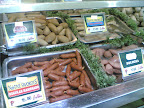Laing is one of Bicol's well-known and sumptuous dish among the locals. Bicolanos' version of Laing is very spicy and you can tell by the presence of several pieces of cayenne peppers (siling labuyo) in the dish.
Ingredients:
- 1 pack 70 grams shredded dried gabi (taro) leaves
- 1 cup coconut cream (kakang-gata)
- 2 cups coconut milk
- 1/2 cup shredded dried bakalaw meat or (codfish meat)
- 1 thumb-size fresh ginger
- 1 small minced onion
- 5 cloves minced garlic
- 2-3 pieces cayenne pepper (siling labuyo)
- salt to taste
- Put the saucepan in medium heat.
- Add the coconut milk and let it simmer.
- Add ginger, garlic and onion. Simmer for 2 minutes. Stir constantly to avoid curding.
- Add fish. Simmer until fish is nearly cooked.
- Add taro leaves. Stir to make sure the coconut milk is absorbed by the taro leaves.
- Cover and let it simmer for 5 minutes.
- Add the coconut cream (kakang-gata).
- Let it simmer again until the coconut cream is absorbed by the taro leaves.
- Add the cayenne peppers (siling labuyo).
- Cook until the leaves are soft but not soggy.
- Season with salt according to taste.
astoderalf








 Monday, August 31, 2009
Monday, August 31, 2009









.jpg)










